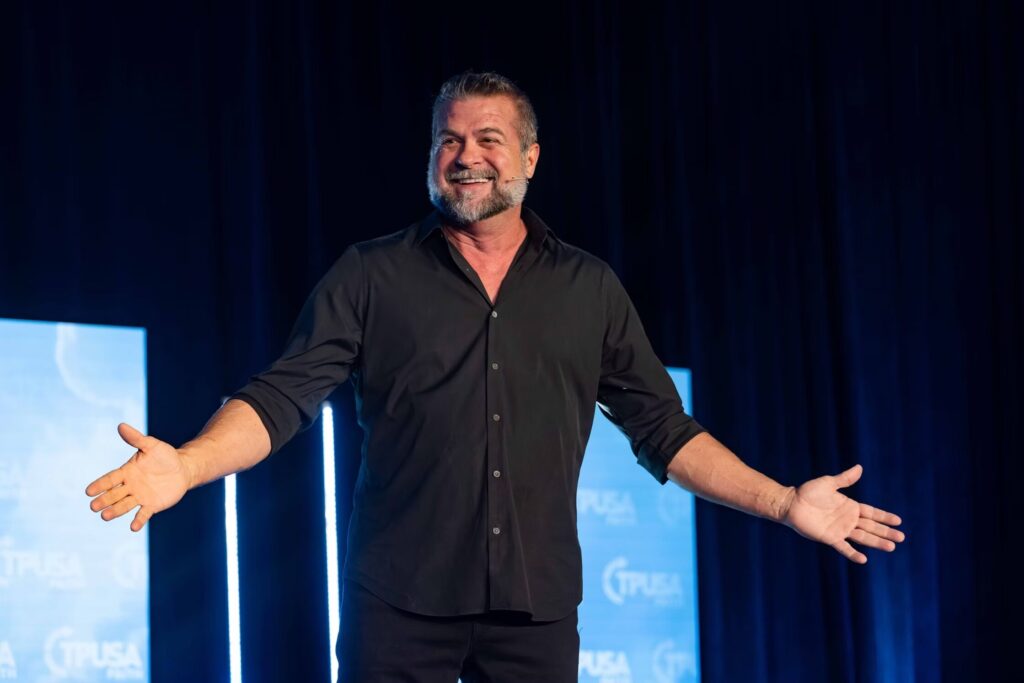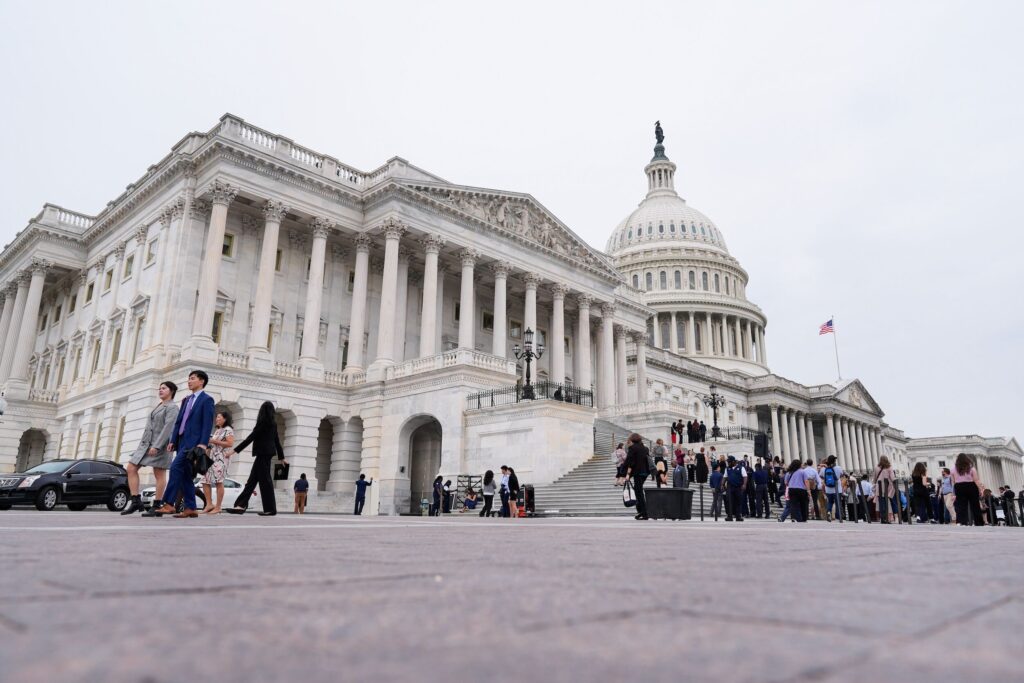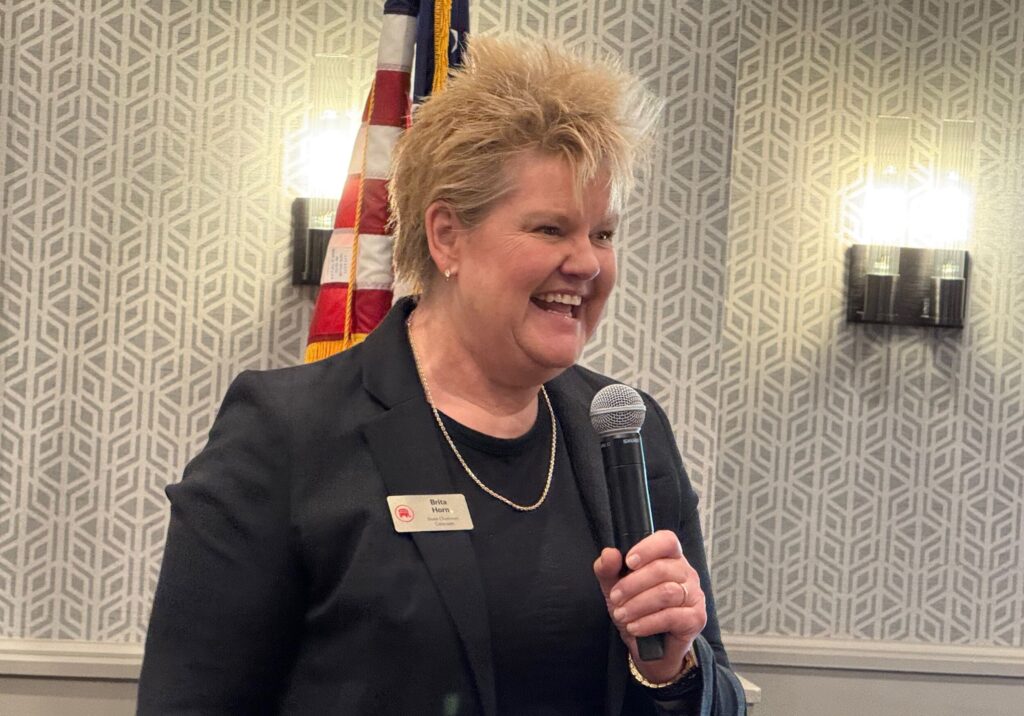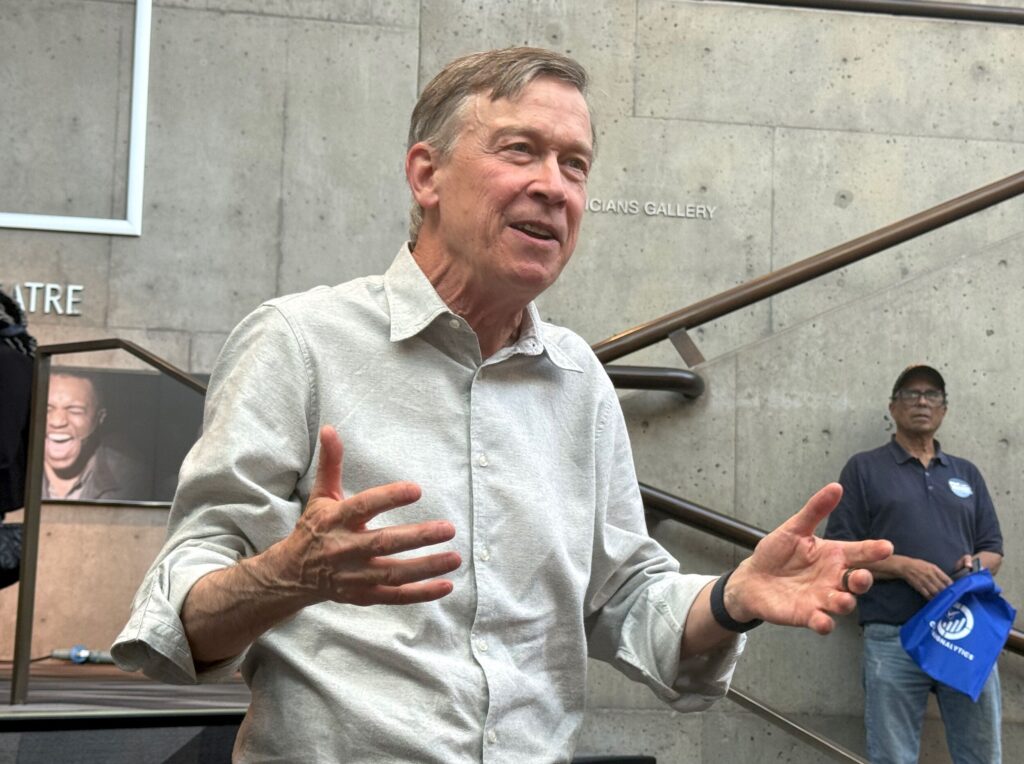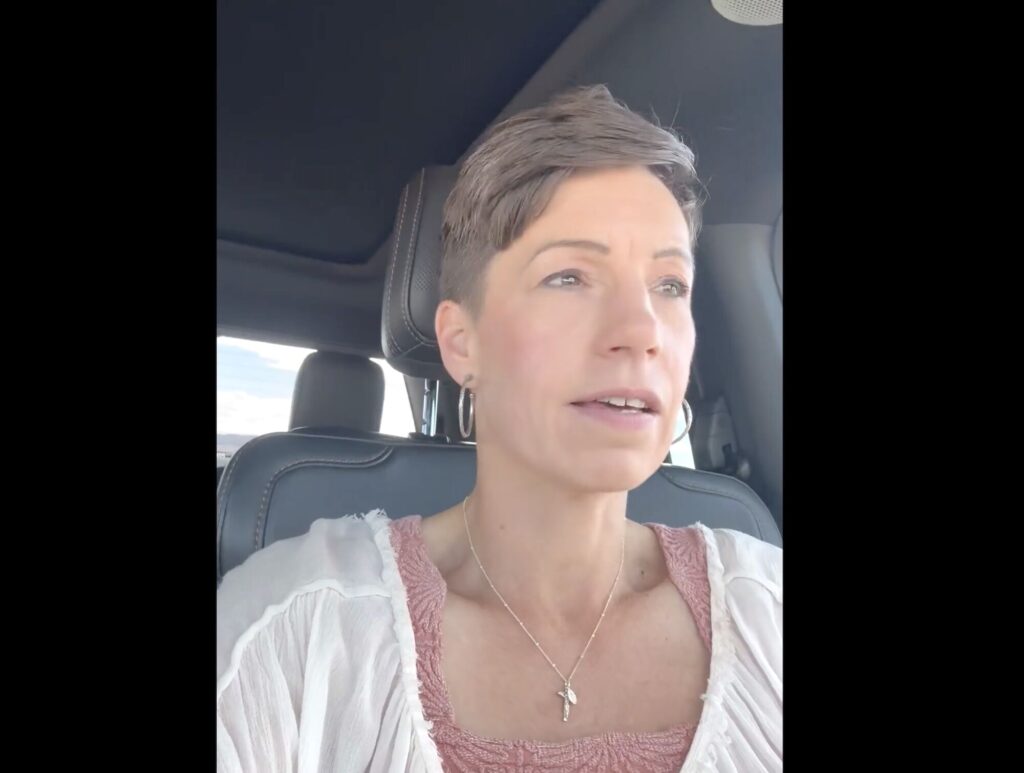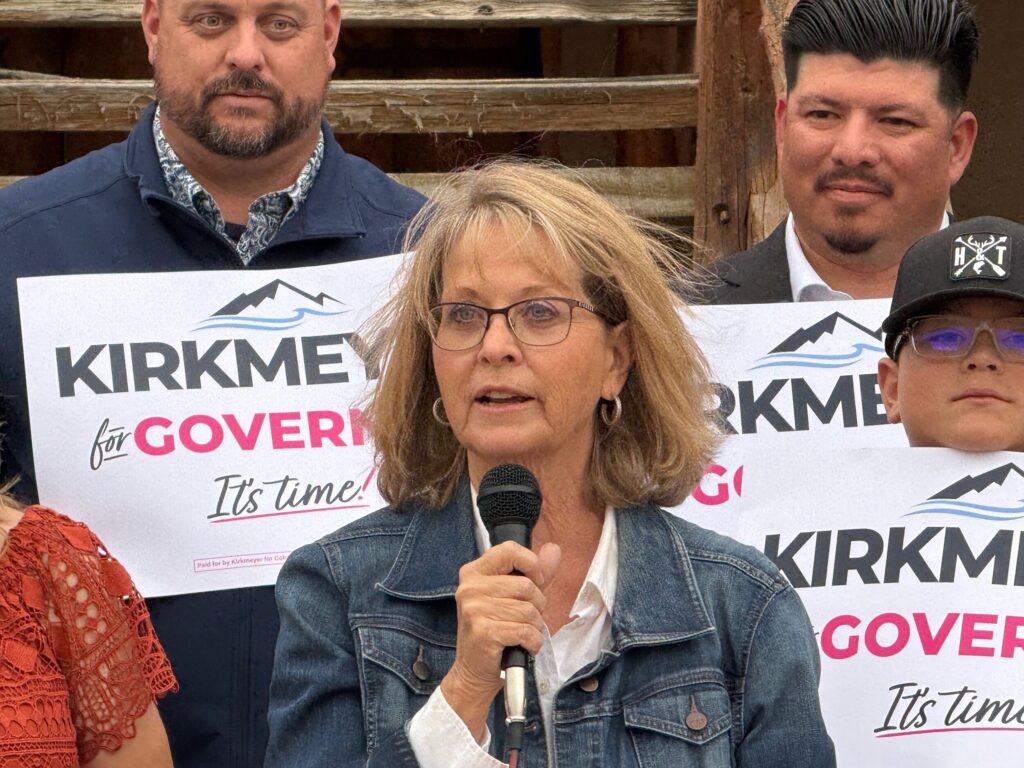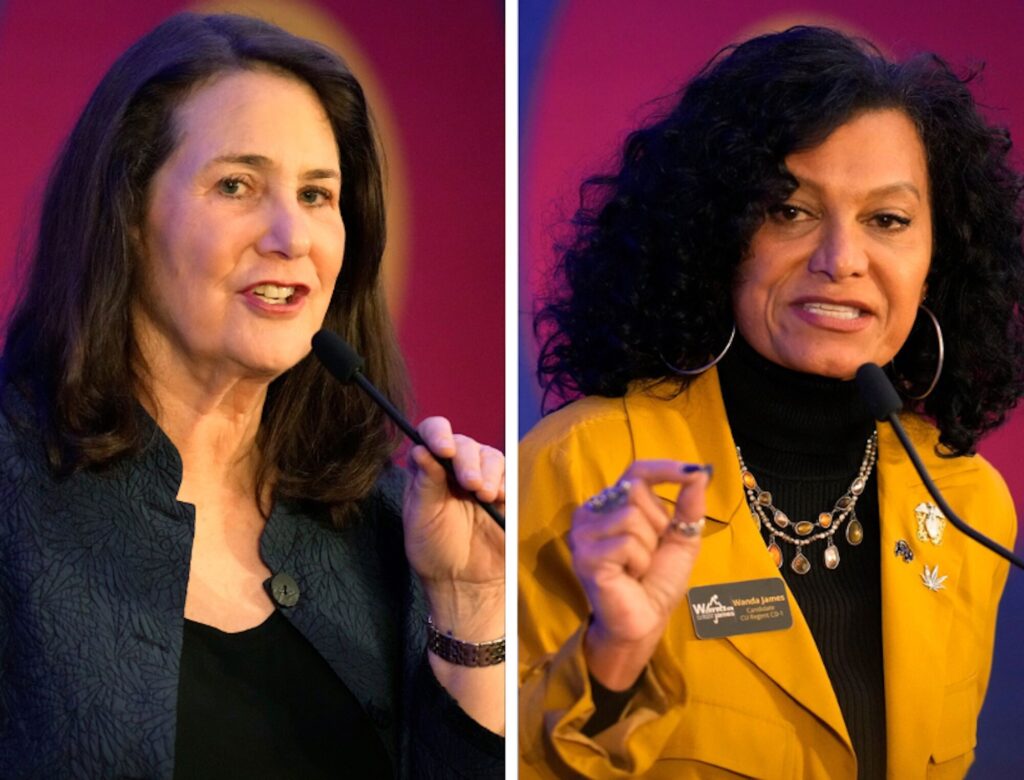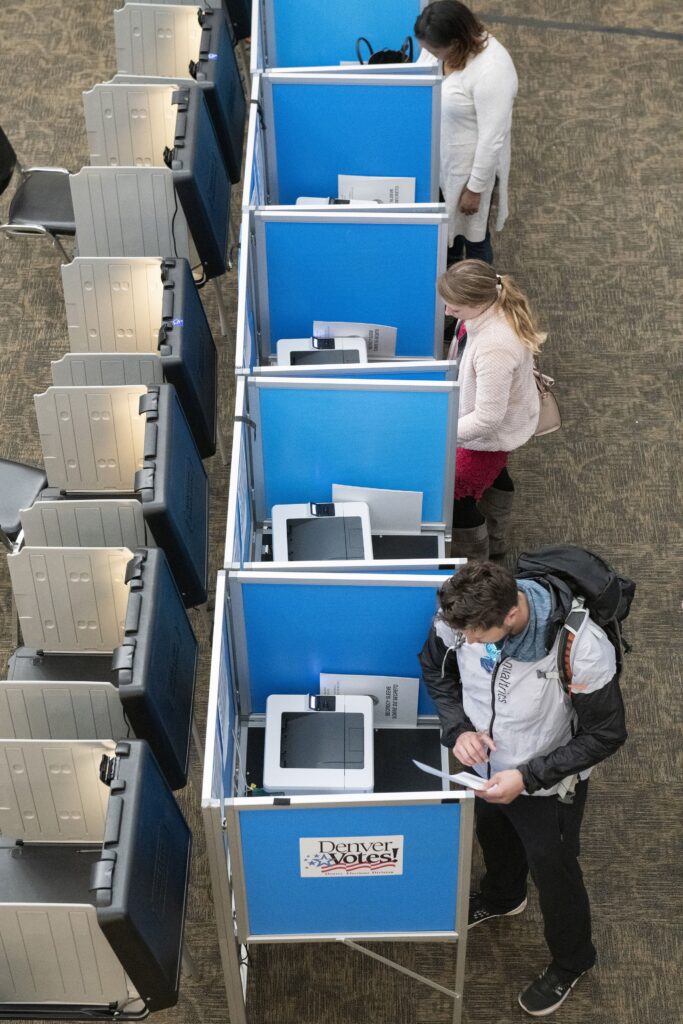Nearly a dozen Republicans pack primary to replace Colorado’s Ken Buck | COVER STORY

With just weeks until precinct caucuses and less than a month to go before nominating petitions are due, it’s crunch time in the Republican primary for Colorado’s safest GOP-held congressional seat.
At last count, 11 candidates are vying for the chance to replace Republican Ken Buck, the former state GOP chairman who said in early November that he isn’t running for a sixth term representing the sprawling 4th Congressional District.
Capping months of speculation that the former Weld County prosecutor was moving toward retirement, Buck’s announcement set off the political equivalent of a gold rush, as Republicans eyed one of the only promotions available in a once-purple state that hasn’t elected a GOP candidate to major statewide office in a decade.
As 2023 drew to a close, Lauren Boebert, the two-term GOP lawmaker who came within 546 votes of losing reelection in 2022 in the Republican-leaning 3rd Congressional District, announced she is moving across the state into Buck’s district to seek another term from a more reliably Republican electorate.
Led by the state’s most prominent Republican, the field also boasts current and former state lawmakers, past congressional candidates and political novices.
The hopefuls’ backgrounds include everything from cattle ranching on the Eastern Plains to former owner of a gun-themed restaurant, from talk show host and suburban mom who once competed in the Miss America pageant to purveyor of T-shirts that declare Donald Trump the “Sexiest Man Alive,” with the most recent entrant billed as the author of a forthcoming children’s book about the wonders of fossil fuels.
In addition to Boebert, those in the race are Logan County commissioner and former state lawmaker Jerry Sonnenberg, state Reps. Mike Lynch of Wellington and Richard Holtorf of Akron, former state Sen. Ted Harvey, filmmaker and former radio talker Deborah Flora, businessman and former 2nd Congressional District GOP nominee Peter Yu, Weld County Council member Trent Leisy, former top congressional staffer Chris Phelen, Hispanic Energy Alliance chairman Floyd Trujillo and activist Justin Schreiber.
“This is not a coronation,” Boebert said at a recent primary debate in Fort Lupton. Noting accurately that her fellow Republicans likely agreed on most topics, Boebert added: “Everyone will talk like a Freedom Caucus member, but there is only one who governs as a Freedom Caucus member. I’m here to fight for you and to earn your support.”
By every available metric — from her massive fundraising advantage and overwhelming edge in name identification to an unmatched ability to generate headlines — it’s Boebert’s race to lose, though a few factors could complicate things for the former Western Slope resident.
Boebert’s stints in the spotlight could test the hypothesis that there’s no such thing as bad publicity.
Nearly a year into her second term in Congress, the vocal Second Amendment advocate and publicity magnet had already secured a steady stream of headlines for her combative approach to politics — from suggesting that fellow lawmaker Ilhan Omar, a Minnesota Democrat and a Muslim, was a terrorist to heckling President Joe Biden during his first State of the Union address — when Boebert and a date were expelled from a performance of “Beetlejuice: The Musical” in Denver last September for causing a disturbance.
After initially denying she’d done anything more than over-exuberantly enjoying the show, Boebert apologized after video footage emerged of her vaping next to a pregnant woman, taking flash photos during the performance and wagging her finger at theater staff as they escorted the couple to the exit.
Additional footage released after her apology showed Boebert and her date groping each other in the crowded auditorium, spurring mockery from late night comedians and that pinnacle of pop culture embrace, a portrayal on Saturday Night Live.
Boebert’s late December announcement that she is ditching the 3rd Congressional District drew scorn from rival candidates and state Republicans alike — hardly the reception the political powerhouse might have expected.
While a handful of candidates beat her to the punch, more Republicans launched campaigns after Boebert’s switch than had entered the race before she announced her move.
But given the unusual dynamics that play out in crowded primaries — particularly in Colorado’s party contests, where unaffiliated voters can tip the scales — it’s anybody’s guess which Republican will wind up on top when ballots are counted.
Major party candidates have two routes to the ballot in Colorado — by petition and through the caucus and assembly process, with an option of taking both paths simultaneously.
The assembly process begins the first week of March, when county parties hold precinct caucuses and begin picking delegates to higher assemblies, including the gatherings that nominate congressional candidates, typically held in conjunction with the Democrats’ or Republicans’ state assembly in early April. It takes the support of 30% of delegates to win a spot in the primary, meaning that, at most, three candidates can emerge from an assembly, though more often it’s just one or two that make it.
Candidates were able to start circulating nominating petitions in mid-January and have until March 19 to gather the required 1,500 signatures from fellow party members. It’s a race to turn in petitions, since voters can sign multiple petitions, but their signature only counts for the first petition that’s submitted and processed, potentially subtracting signatures from candidates who file theirs later.
As of Feb. 15, eight of the 11 Republicans running in CD4 had their petition formats approved for circulation or had told Colorado Politics they intend to petition: Boebert, Flora, Holtorf, Leisy, Lynch, Phelen, Yu and Trujillo. All but a couple have also said they also intend to go through the assembly. Earlier in the week, Sonnenberg said at a debate that he is considering petitioning, in addition to going through assembly, but Harvey made clear he will only seek support from delegates.
Candidates who take both routes must receive votes from at least 10% of assembly delegates, or their petitions won’t count, decreasing the likelihood that all the candidates who are petitioning and say today that they’ll court delegates ultimately show up at the assembly.
While it could be more expensive than ever to hire petition gatherers — consultants tell Colorado Politics the going rate is in the neighborhood of $25 per signature, with the cost likely to climb as the deadline approaches — it’s conceivable that all the candidates seeking the ballot by petition could qualify, though if recent history is any guide, at least several will fall short.
The primary ballot won’t be set until late April, after the Secretary of State’s Office has had time to certify all submitted petitions and the candidates have had time to challenge rulings.
Nearly half of the district’s residents live in Douglas County, with another 15% living in a sliver of Larimer County, in around Loveland, and single-digit shares in each of the seat’s 19 other counties.
Stretching from Colorado’s northern to southern borders, the district touches five states — Wyoming, Nebraska, Kansas, Oklahoma and New Mexico — the sprawling district is mostly rural in acreage but predominantly suburban by population, with nearly three-quarters of its residents living in suburbs and larger exurbs, concentrated just four population centers with populations greater than 50,000: Highlands Ranch, Loveland, Castle Rock and Parker.
“It’s going to take some very significant work on the part of anyone who gets elected in this district, which will not be a surprise to these folks who are out working in the district right now and moving through those 21 counties all throughout throughout eastern Colorado,” said cattle rancher and former state Sen. Tom Wiens, R-Sedalia, the 4th CD’s Republican chairman, introducing the candidates at a Feb. 12 debate in Castle Rock.
“It’s a very unique district and it’s easy to misunderstand this district when you have one big county like Douglas County, our own county here, that has 47 plus or minus percent of the vote, but we have 20 other counties out there,” Wiens continued.
“And I can tell you from representing multiple counties in the state Senate, once you become elected from your district, it’s the smaller counties that really need your help. Bigger counties, like Douglas County — we can do a lot of things for ourselves. We need a congressperson who votes for us, but representing that entire district is going to take somebody who really is committed to it.”
At 38,101 square miles, the 4th CD is larger than 14 states, with a footprint slightly larger than Indiana’s and covering slightly less land than Kentucky.
The district is dwarfed, however, by Colorado’s 3rd CD — the one Boebert is leaving behind — which encompasses most of the Western Slope and much of Southern Colorado, include Pueblo County and the San Luis Valley. That seat’s 49,728 square miles make it larger than 20 states, ahead of Mississippi and behind Louisiana.
According to an analysis by the state’s Independent Redistricting Committee, which drew the seat’s boundaries ahead of the 2022 election based on the 2020 census, the 4th CD’s electorate has tilted toward Republican candidates in a sampling of statewide elections over the last decade by an average margin of 26.6%, making it the reddest congressional district in the state.
By comparison, the 5th Congressional District, which nearly coincides with El Paso County and has long been considered a GOP bastion, leaned toward Republicans by a 20.2% margin in the same statewide races, while the Denver-based 1st Congressional District provided Democrats overwhelming margins averaging 57.1%.
The 4th CD has a Partisan Voting Index of R+13, meaning Republican candidates have a built-in advantage of 13 percentage points in the district, according to The Cook Political Report, which compiles PVIs for every congressional district in the country based past electoral performance. That compares to the Democrats’ D+29 edge in Denver’s 1st CD — whose voters haven’t sent a Republican to Congress since 1970 — and the GOP’s favorable R+9 rating in the Colorado Springs-based 5th CD, which has never elected a Democrat to Congress.
Although the 4th CD’s boundaries have changed every decade after reapportionment, it’s encompassed the Eastern Plains since 1982 — prior to that, it stretched across the northern half of the state — and has been reliably red in nearly every election, only sending a Democrat to the House once, for a single term, in the past 50 years.
That Democrat was Betsy Markey, who ousted three-term incumbent Republican Marilyn Musgrave in 2008 — two rounds of reapportionment ago, when the more closely divided district was anchored by Larimer and Weld counties — but was unseated herself by Republican Cory Gardner in 2010.
Three of the Colorado Republicans elected to the U.S. Senate since 1990 began their congressional careers representing the 4th CD — Hank Brown, Wayne Allard and Gardner, who preceded Buck in the district.
Donald Trump carried the district over Democrat Hillary Clinton by a 30% margin in 2016 and again won its precincts over Joe Biden in 2020, though Trump’s margin slipped to 18.5%. Buck did better against Democratic nominee Ike McCorkle in 2022, winning reelection to his fifth term by a 24.3% margin.
Making his third run in the district, McCorkle is one of five Democrats who have launched campaigns for the seat in 2024, also including John Padora, Trisha Calvarese, Karen Breslin and Anil Saxena. Libertarian Douglas Mangeris and unaffiliated candidate Dustin Castro have also filed to run in the district.


